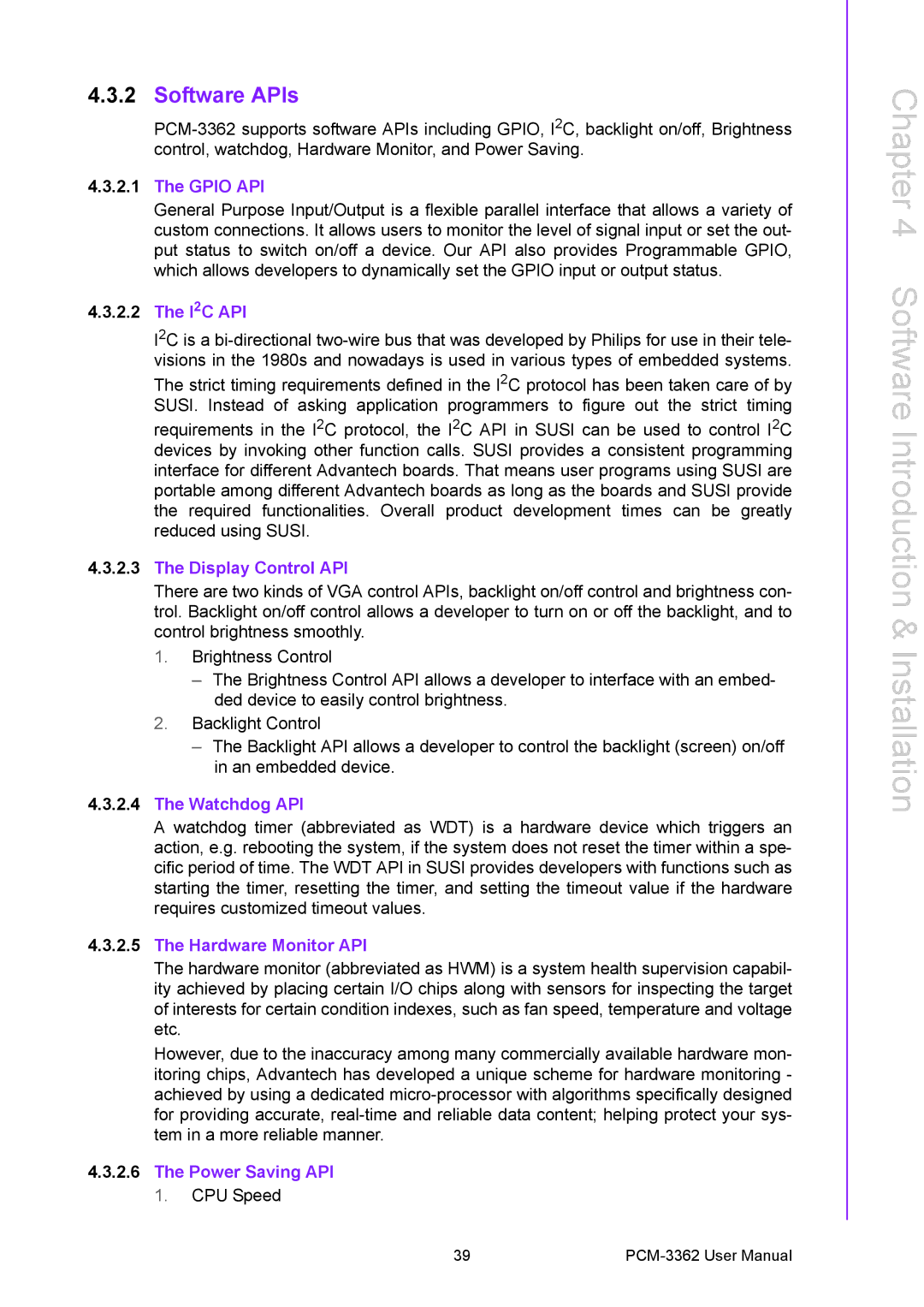4.3.2Software APIs
4.3.2.1The GPIO API
General Purpose Input/Output is a flexible parallel interface that allows a variety of custom connections. It allows users to monitor the level of signal input or set the out- put status to switch on/off a device. Our API also provides Programmable GPIO, which allows developers to dynamically set the GPIO input or output status.
4.3.2.2The I2C API
I2C is a
4.3.2.3The Display Control API
There are two kinds of VGA control APIs, backlight on/off control and brightness con- trol. Backlight on/off control allows a developer to turn on or off the backlight, and to control brightness smoothly.
1.Brightness Control
–The Brightness Control API allows a developer to interface with an embed- ded device to easily control brightness.
2.Backlight Control
–The Backlight API allows a developer to control the backlight (screen) on/off in an embedded device.
4.3.2.4The Watchdog API
A watchdog timer (abbreviated as WDT) is a hardware device which triggers an action, e.g. rebooting the system, if the system does not reset the timer within a spe- cific period of time. The WDT API in SUSI provides developers with functions such as starting the timer, resetting the timer, and setting the timeout value if the hardware requires customized timeout values.
4.3.2.5The Hardware Monitor API
The hardware monitor (abbreviated as HWM) is a system health supervision capabil- ity achieved by placing certain I/O chips along with sensors for inspecting the target of interests for certain condition indexes, such as fan speed, temperature and voltage etc.
However, due to the inaccuracy among many commercially available hardware mon- itoring chips, Advantech has developed a unique scheme for hardware monitoring - achieved by using a dedicated
4.3.2.6The Power Saving API
1.CPU Speed
Chapter 4 Software Introduction & Installation
39 |
